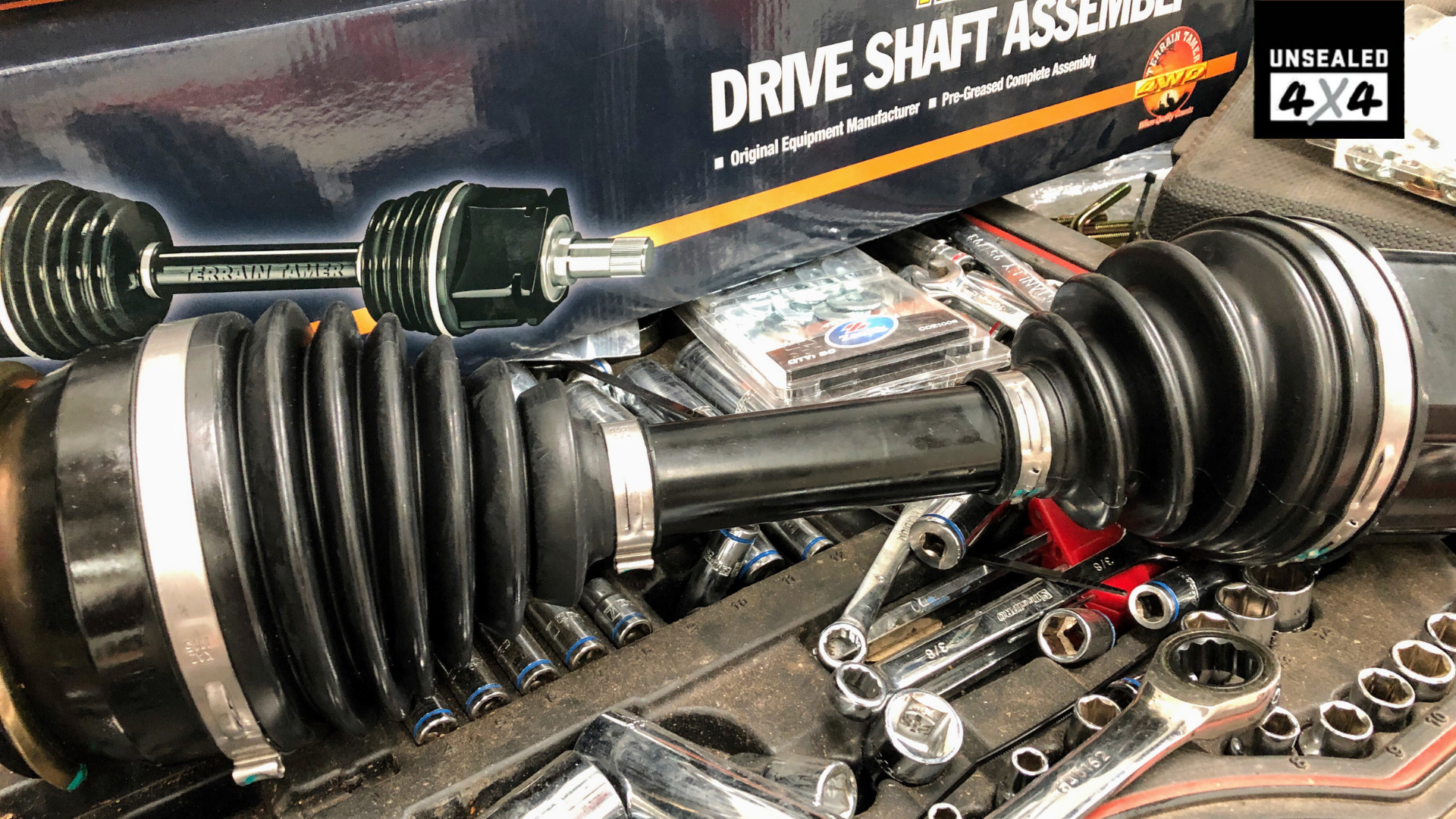A Constant Velocity Joint, or CV joint, is essentially a driveshaft running from the front differential to each wheel. In an IFS 4WD, the wheels turn and go up and down, so the CV joint needs to turn with the wheel, as well as have the ability to go up and down. In a solid-axle application, the CV joint only needs to be able to move side to side, while turning the wheel. So, while they all look different, they have the same job… providing drive to your front wheels.
Why do CV joints break?
The main culprit is shock loading, like when a spinning wheel lifts off the ground and then lands hard; something that can happen fairly often with an independent suspension system because of the usually limited amount of travel.
Shock loading puts massive amounts of pressure on the driveline, and CV joints are usually the weakest link. This will cause the CV joint cage to physically crack, or in some cases the actual shaft will shear, but this isn’t as common. If you see a 4WD start to bounce, or hop whilst climbing an obstacle, this is exactly the sort of condition that will bust a CV joint.
As they are a moving part, age causes them to wear out too. For instance, the CV joints on my HiLux have travelled more than 285,000 kilometres and have just split a boot after I installed a new lift kit. I noticed a clunking noise on take-off, and sure enough the boot was split. I’ll explain how to replace CV joints in another article. Stay tuned.
Speaking of lifting your IFS 4WD this too will put more strain on your CV joints, as the angle of operating is now much steeper. The most effective way of reducing this, is to install what is known as a diff drop, which lowers the differential, thus reducing the operating angle. This is something I’m going to have to look into, to protect those new and very important CVs.
Larger tyres are also a CV joint killer, with the larger rolling diameter and heavier unsprung mass physically putting more pressure on them. Not to mention the increased grip provided by larger off-road orientated tyres, when a tyre lifts and lands hard, the shock loading effect is magnified.
How will I know the CV joint is broken?
If you can hear a clicking noise while making tight turns or accelerating when in 4WD, this is a sure sign your CV joints are on the way out. This applies to both solid-axle vehicles and those with IFS.
Another thing to look out for, as mentioned above, is split CV boots on IFS vehicles, which is extremely common on 4WDs as they are vulnerable to sticks tearing them as well as wearing out through use. When a boot splits, this allows the grease to escape out of the boot, causing the CV joint to run dry and essentially self-destructing. If you catch this early enough, a simple boot replacement can be undertaken and a few cans of degreaser purchased to clean up the mess, but in many cases it’s more cost effective to replace the entire unit and keep the old one as a spare.

Should you buy genuine or aftermarket?
In most cases, the genuine CV offered from a manufacturer will be the strongest available. Naturally, there are aftermarket companies such as Longfield in the States that make competition-spec chromoly CV joints, but sadly this technology hasn’t filtered down to Australian-spec IFS 4WDs.
For my own vehicle, I did some shopping around and found some really cheap CV joints online for around $50 each. But this is way too cheap, and way too good to be true. For instance, genuine CVs from Toyota were more than $500 each, which to me is too expensive but from experience they are good quality.
For me, I looked to the aftermarket to find the middle ground and grabbed a set from Terrain Tamer. They weren’t the cheapest, but cheaper than genuine and I know I can trust a big company like Terrain Tamer over a random faceless internet company making huge promises about OE quality. Do your research here, and if something sounds too good to be true, it generally will be. Warranty is a good indicator of quality, as is customer service back-up. Will that faceless internet-based company will help you if you have a warranty claim while in the Simpson Desert?
How to look after CV joints
The trick to getting long life from your CV joints, is to not drive aggressively. Mechanical sympathy is key to long lasting and trouble-free motoring. Below are my five top tips to avoid a busted CV Joint:
- Don’t go nuts tyre wise, stick to the largest legal size for your state;
- Avoid extreme angles from massive lifts in IFS vehicles;
- Take care when reversing and avoid using full steering lock under power. This is when a CV is at its weakest;
- If you are spinning tyres for more than three seconds and aren’t moving forward… stop spinning your tyres; and
- Avoid shock loading when a tyre lifts, and if your 4×4 is bucking like a bull, stop and reassess the obstacle.
How to install CV joints…
To see what goes into a CV joint change, check out this video where we’ll install a pair of Terrain Tamer CV joints into my HiLux, showing you the tools you’ll need to get the job done, how long it will take and more. Every four-wheeler should know how to do this, in case it happens out on the tracks.










